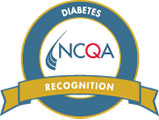To Buy Hydroxychloroquine Online Visit Our Pharmacy ↓
 Hydroxychloroquine: Malaria Treatment to Covid-19 Hype
Hydroxychloroquine: Malaria Treatment to Covid-19 Hype
The Origins and First Uses of Hydroxychloroquine
Hydroxychloroquine, a derivative of quinine found in cinchona bark, was first synthesized in 1946. This molecule, initially intended to offer a safer alternative to the more toxic chloroquine, gained rapid prominence. Its main advantage lay in its reduced side effects, making it preferable for long-term use. Hydroxychloroquine was primarily heralded for its anti-malarial properties, owing to its ability to interfere with the growth of parasites in red blood cells. During World War II, it emerged as a critical tool in the fight against malaria, protecting countless soldiers stationed in endemic areas. This success story played a pivotal role in establishing hydroxychloroquine as a staple in the arsenal against this deadly disease.
| Year | Event |
|---|---|
| 1946 | Hydroxychloroquine synthesized |
| World War II | Used to protect soldiers from malaria |
Hydroxychloroquine’s Role in Fighting Malaria

Initially developed in the 1950s as a less toxic derivative of chloroquine, hydroxychloroquine quickly became a staple in antimalarial treatment. It works by interfering with the malaria parasite's ability to process hemoglobin, essentially starving the parasite of the nutrients it needs to survive. Over the decades, hydroxychloroquine has saved countless lives, especially in regions where malaria is endemic, such as sub-Saharan Africa and parts of South America.
This medication has been particularly effective against Plasmodium vivax and Plasmodium ovale, two of the malaria-causing parasites. Despite its success, it's important to note that hydroxychloroquine isn't a one-size-fits-all solution; resistance to the drug has been a growing issue. As a result, it is often used in combination with other antimalarial drugs to ensure efficacy.
The global fight against malaria has heavily relied on hydroxychloroquine, making it an essential tool in public health initiatives. This widespread use has highlighted the drug’s relatively low cost and accessibility, which are critical factors in resource-limited settings. However, as with any drug, monitoring its long-term efficacy and safety continues to be an important aspect of ongoing research.
Exploratory Uses in Autoimmune Diseases Like Lupus
Hydroxychloroquine has proven beneficial in managing autoimmune conditions such as lupus. Lupus is a chronic disease where the immune system attacks healthy tissue, causing inflammation and pain. Physicians have leveraged hydroxychloroquine's immunomodulatory effects to help mitigate these symptoms, offering patients improved quality of life. Clinical studies have demonstrated its efficacy in reducing flare-ups and preventing organ damage, cementing its role in long-term lupus care.
Moreover, hydroxychloroquine has a relatively well-documented safety profile when used under medical supervision. Its broad applications underscore its versatility beyond malaria treatment, offering hope and relief to individuals grappling with autoimmune disorders.
Early Studies on Hydroxychloroquine and Covid-19

In the early stages of the Covid-19 pandemic, the medical community was desperate for treatments. Preliminary studies on hydroxychloroquine, an established anti-malarial drug, showed some promise in vitro, leading to a rush of interest. Small-scale clinical trials suggested potential benefits, which spurred further investigation. However, as larger, more controlled studies were conducted, results became mixed and often contradictory. Despite initial hope, uncertainties about efficacy and safety grew, contributing to a climate of confusion and debate within the scientific community. The urgency of the pandemic fueled rapid dissemination of unverified findings, amplifying public and media interest.
The Media Hype and Public Misconceptions
The buzz around hydroxychloroquine during the early days of the Covid-19 pandemic was fueled significantly by media coverage and high-profile endorsements. Rapidly, it was seen as a potential miracle cure, leading to a surge in public demand and widespread misinformation. This created a complicated landscape where scientific data often got drowned out by speculation and hype.
With conflicting reports and social media amplification, public misconceptions about hydroxychloroquine's efficacy and safety proliferated. Many overlooked the importance of rigorous clinical trials and proper medical guidance, focusing instead on anecdotal evidence and sensational headlines. This frenzy not only depleted supplies for patients needing the drug for established uses but also diverted attention from other potential treatments.
| Keyword | Context |
|---|---|
| Hydroxychloroquine | Prominently featured in media during the pandemic, causing public demand and misinformation. |
Current Scientific Consensus and Future Research Directions
Currently, scientific consensus on hydroxychloroquine's role in treating COVID-19 has shifted significantly. Extensive clinical trials have largely demonstrated limited effectiveness and potential risks when used for coronavirus. Consequently, health authorities like the FDA and WHO have revoked emergency use authorizations and advised against its use outside clinical settings.
Looking forward, researchers continue to explore hydroxychloroquine's potential applications in other areas. Studies are ongoing to evaluate if there are niche applications in combating other viral outbreaks or enhancing treatment for autoimmune disorders. Advanced methodologies and technology will likely improve our understanding, ensuring any future use is both effective and safe. These efforts underscore the importance of evidence-based medicine in addressing emerging health crises.
![]()








 We are now located at
We are now located at


